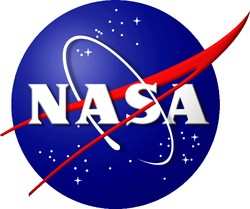FIRST Program Will Include More Than 45 Regional
Competitions
NASA said Monday it will provide up to $20 million over the next
five years to support a national program to inspire student
interest in science, technology and mathematics with a focus on
robotic technology. The funding is part of a cooperative agreement
with the Foundation For Inspiration and Recognition of Science and
Technology (FIRST), a nonprofit organization in Manchester, NH.
FIRST provides students the opportunity to engage with government,
industry and university experts for hands-on, realistic exposure to
engineering and technical professions.

"This is the largest NASA-funded student program geared toward
robotics activities," said NASA Administrator Charles Bolden. "For
the next five years, approximately 25,000 students across the
country will not only learn from our nation's best and brightest,
but also compete and have fun at the same time."
The centerpiece of the program is the annual FIRST Robotics
Competition. During more than 45 regional competitions, teams of
high school students have six weeks to build a robot using an
identical kit of parts. There are dimension and weight limitations
and other technical restrictions, but teams can determine the look
and function of the robots. The regional competitions culminate
with an international championship in April.
The competition is structured like an athletic event. Teams
compete in an area the size of a small basketball court. The robots
must have offensive and defensive capabilities. Each team's robot
works to accomplish a task, while preventing its opponent from
doing the same. The robots must be sturdy because of frequent
contact between the machines. "This program has had a direct impact
on our ability to mentor U.S. students and help them consider
technical careers," said Ed Weiler, associate administrator of
NASA's Science Mission Directorate in Washington. "Supporting this
program is critical to developing scientists and engineers for
future U.S. space exploration."
NASA's Robotics Alliance Project (RAP) solicited proposals Oct.
4 from nonprofit and educational institutions to design and
administer a robotics outreach competition. RAP, which is sponsored
by NASA's Science Mission Directorate and managed from NASA's Ames
Research Center in Moffett Field, Calif., competitively selected
FIRST from the candidates.
"In addition to financial support, there is considerable time
investment and commitment on the part of the NASA engineers and
scientists who work with the students," said Solar System Program
Executive Dave Lavery of NASA Headquarters.
During the past 16 years, the RAP has issued approximately $40
million to academic and nonprofit organizations across the nation
to stimulate intellectual capability in fields tied to robotics
engineering. All 10 NASA centers participate in the RAP by
contributing technology expertise, funding and other resources.
NASA is the largest organization involved with FIRST and has
participated since 1995. In 1999, NASA and First signed a
memorandum of agreement to cooperatively expand the availability of
technology development, education and inspiration programs to
students throughout the country. U.S. entrepreneur Dean Kamen
founded FIRST in 1989 to encourage youth to become leaders in
science and technology.
 NTSB Final Report: Dehavilland DHC-2 MK 1
NTSB Final Report: Dehavilland DHC-2 MK 1 Aero-News: Quote of the Day (10.29.25)
Aero-News: Quote of the Day (10.29.25) ANN's Daily Aero-Linx (10.29.25)
ANN's Daily Aero-Linx (10.29.25) ANN's Daily Aero-Term (10.30.25): Minimum Friction Level
ANN's Daily Aero-Term (10.30.25): Minimum Friction Level ANN's Daily Aero-Linx (10.30.25)
ANN's Daily Aero-Linx (10.30.25)



